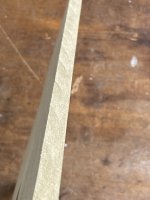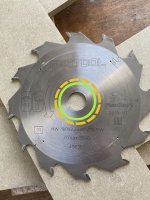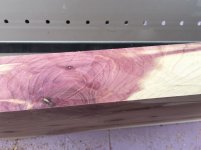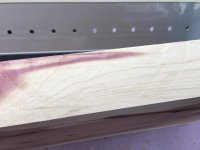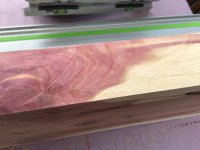I have been using a 12T Panther blade on my TSC55. Thinking it would be better for cutting up plywood/mdf than the supplied 28T blade.
I’m not sure the cut was ever brilliant, but I have just noticed that the blade feels very rough when cutting and producing a very uneven cut. Below is a photo of the cut on some 9mm mdf with the Panther blade and the standard one. I have never had any blade, however blunt, produce a wonky cut like this.
[attachimg=1]
[attachimg=2]
I have examined the blade and cannot see any nick or other damage to the TC tips on this pretty lightly used blade. I guess one of the teeth must have got out of line and maybe I will try a dial indicator when I get back to the main workshop. Has anyone else had this experience?
[attachimg=3]
Cheers
I’m not sure the cut was ever brilliant, but I have just noticed that the blade feels very rough when cutting and producing a very uneven cut. Below is a photo of the cut on some 9mm mdf with the Panther blade and the standard one. I have never had any blade, however blunt, produce a wonky cut like this.
[attachimg=1]
[attachimg=2]
I have examined the blade and cannot see any nick or other damage to the TC tips on this pretty lightly used blade. I guess one of the teeth must have got out of line and maybe I will try a dial indicator when I get back to the main workshop. Has anyone else had this experience?
[attachimg=3]
Cheers

